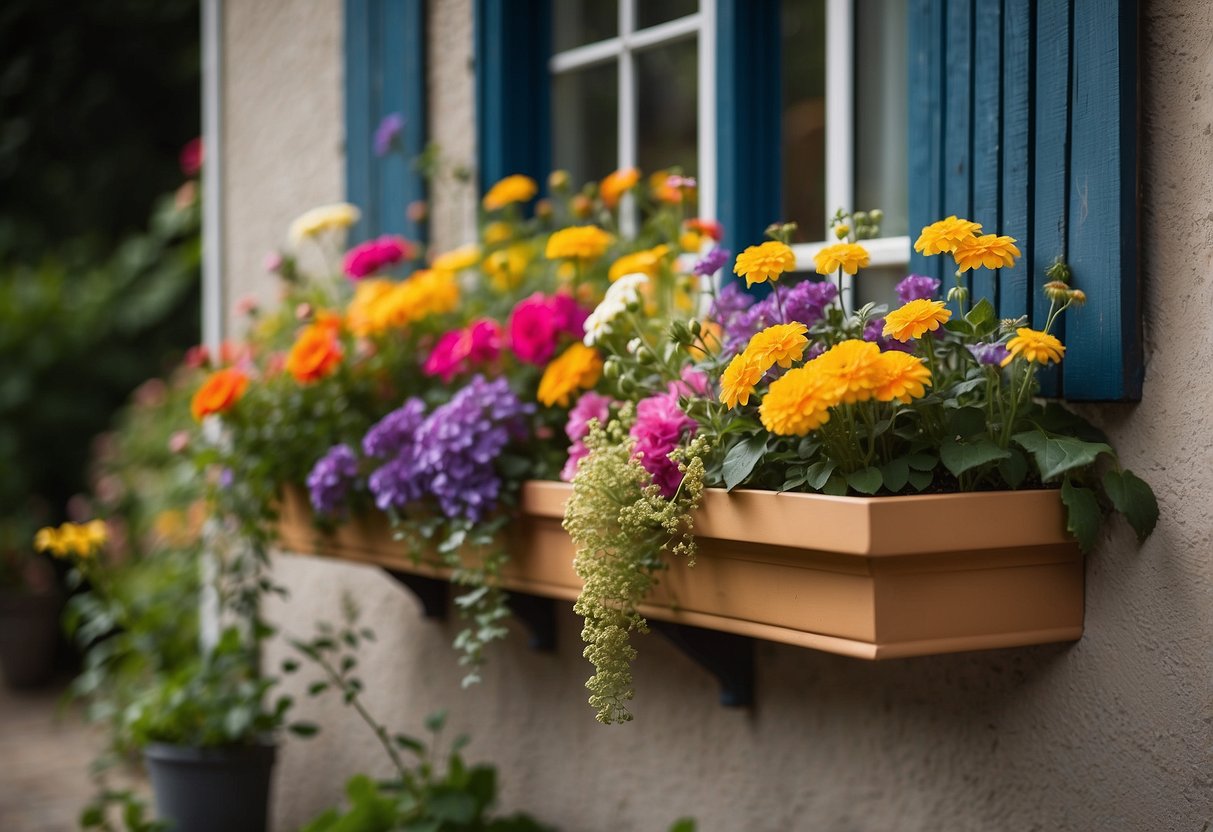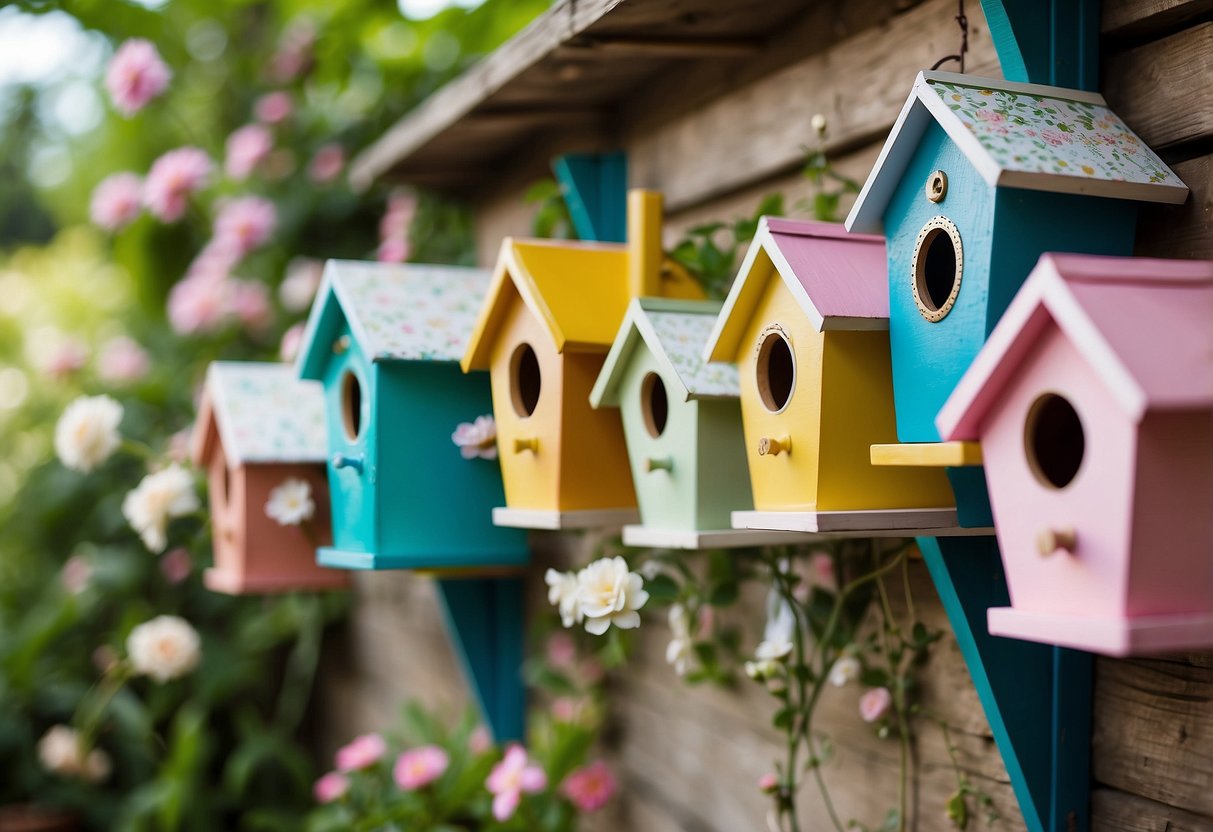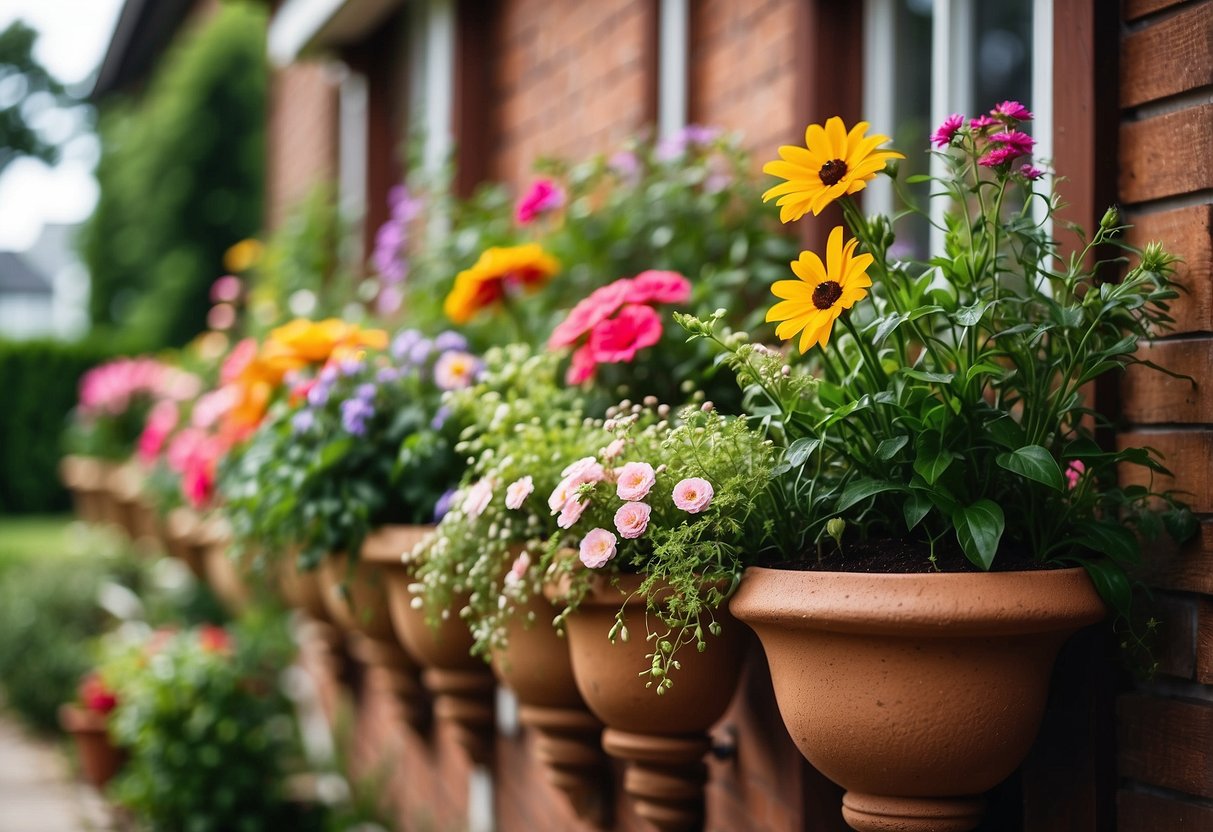Side of House Garden Ideas: Transform Your Space with These Creative Tips
Looking to make the most of that often overlooked side yard? Transforming the side of your house into a beautiful garden spot can enhance your home’s curb appeal and provide a tranquil space for relaxation. It’s a fantastic way to utilize that narrow strip of land that might otherwise go unused.

Why not turn this underused area into a functional and aesthetically pleasing space? Whether you want to create a flower garden, set up a cozy seating area, or even add some storage solutions, the possibilities are endless. With a little creativity, your side yard can become one of the highlights of your property.
1) Vertical Herb Garden

Creating a vertical herb garden on the side of your house is a great way to grow fresh herbs without taking up much space.
You can use a pallet wood three-tiered herb garden for a rustic look.
For a more modern touch, try hanging shelves with terra-cotta pots.
This allows you to have easy access to fresh herbs whenever you need them.
2) Succulent Wall Planter

A succulent wall planter can add a touch of greenery to your space without taking up much room. You can create a wood frame filled with dirt and chicken wire netting. Then, arrange succulents in the frame to create a beautiful display.
Consider mixing and matching different colors and textures for an eye-catching design. You can also try creating patterns or an ombre effect with your plants.
Once your plants are in place, water them through the mesh. This setup keeps soil intact and helps the succulents flourish, making it a low-maintenance way to decorate. Learn more about how to make your own succulent wall at Sunset.
3) Colorful Window Box

A colorful window box can bring life to the side of your house. Choose flowers like calibrachoa, anemone, and hydrangeas to fill the box with bright, cheerful colors.
Mixing different heights and textures will make the display more appealing. Plants like calibrachoa and bacopa thrive in sunny spots and add vibrant hues.
Don’t forget to use well-draining soil to keep your plants healthy and blooming all season. With the right combination, your window box will be a stunning focal point.
4) Rustic Trellis with Vines

A rustic trellis can bring charm to the side of your house. Using simple materials like posts, twigs, and twine, you can create a cozy, natural look.
Choose sturdy branches for the base and thinner ones for the top. Vines like climbing hydrangea or jasmine will add a touch of greenery and a pleasant scent.
To secure the vines, you can use zip ties or twine. This will keep your trellis neat and tidy as the plants climb and grow. For more ideas, visit Country Living’s trellis ideas.
5) Hanging Flower Baskets

Hanging flower baskets are a great way to add color and charm to the side of your house. You can use lush, trailing plants like calibrachoa, verbena, or snapdragons to create eye-catching displays. These plants grow best in full sun and will overflow your baskets with vibrant colors.
For a more romantic look, consider planting erigeron karvinskianus. This daisy-like flower is perfect for adding a cottage garden feel. It’s also a prolific self-seeder, making it an easy choice for your baskets.
For dramatic effect, try using a mix of foliage plants. Sweet potato vine adds unexpected color with its chartreuse, lime, purple, and red leaves. These plants provide a lot of impact and can be combined with flowers for a striking display.
To get some inspiring ideas, you can check out this guide on hanging flower basket ideas.
6) Painted Garden Sheds

Painting your garden shed can transform it into a beautiful focal point in your yard. A coat of fresh paint can make your shed look brand new and bring color to your garden area.
You can opt for Scandi neutrals like white, gray, or blush for a calm and relaxing vibe.
For a more vibrant look, choose bright colors or match the shed to your main house. You can make it feel like an extension of your home by using the same earthy green and white colors, adding extras like a deck or stone path.
7) Decorative Garden Path

Creating a decorative garden path along the side of your house can transform an underused area into something special.
A well-designed path using materials like limestone or flagstone can create a charming walkway. For ideas on this, you can check out 13 Clever Side-of-the-House Landscape Solutions.
Incorporate lighting along the path for a welcoming look at night. You will love how a few strategically placed lights can make the path visible and inviting.
8) Outdoor Fairy Garden

Creating an outdoor fairy garden can be a magical addition to the side of your house. Use ferns, moss, and creeping thyme for a lush ground cover.
Add colorful blooming plants like morning glory and sweet peas for a vibrant touch. Tiny accessories like miniature houses and fairy figurines can create a whimsical atmosphere.
Choose containers like ceramic pots, wooden barrels, or hanging baskets for a creative setup. Make sure they have good drainage to keep your plants healthy. Adding a fairy garden house will make the scene even more enchanting.
9) Whimsical Birdhouses

Adding whimsical birdhouses to your side garden can create a charming and playful atmosphere. Imagine a birdhouse with a curved roof design that looks like it popped right out of a storybook.
You might also enjoy using unique materials like an old boot for a boot birdhouse.
Pairing these birdhouses with flowers and greenery will attract more birds and make your garden a lively place. Consider adding a birdhouse with a rustic look, featuring a mix of wood and metal, evoking a touch of country charm.
10) Tiered Planter Display

A tiered planter display can transform the side of your house into a vibrant area. You can stack terra cotta pots in a topsy-turvy style for a fun and visually appealing look.
Wine barrel tiered planters also add a rustic charm and are perfect for succulents. Cinder block and cement planters offer a more modern touch, giving you flexibility in design.
Using different heights and sizes of planters creates a dynamic display. Ideally, arrange them with similar materials and colors. This helps to maintain a cohesive look while maximizing vertical space.
Explore more about these ideas here and here.
Planning Your Side Of House Garden

When planning your side of house garden, it’s important to consider the amount of sunlight and the type of soil you have. Matching the right plants to these conditions will ensure a thriving garden space.
Assessing Sunlight and Soil Conditions
First, observe how much sunlight your side yard gets throughout the day. Full sun areas receive more than 6 hours of sunlight, while partial shade areas get about 3-6 hours. Shade areas receive less than 3 hours. This is crucial for selecting plants that can thrive there.
Next, check your soil. Is it sandy, loamy, or clay? Different plants need different soil types. You can do a soil test at home with a testing kit or send a sample to a local extension office.
Pay attention to drainage. Poorly draining soil can harm plant roots. If your soil doesn’t drain well, consider adding organic matter or using raised beds to improve it.
Choosing the Right Plants
Once you know the sunlight and soil conditions, choose plants that will thrive in your garden. For sunny spots, consider growing lavender or sedum. Both love full sun and well-drained soil.
In shaded areas, ferns and hostas can be a good choice. These plants do well in less light and can add lush greenery to your space.
Don’t forget to think about height and spread. Tall plants can create a backdrop, while shorter ones can fill in the front. Grouping plants by their watering needs can make maintenance easier.
Mixing flowering plants with evergreens can provide year-round interest. Ground covers like creeping thyme can fill gaps and reduce weeds. Choose plants that suit your style and garden needs.
Creative Design Ideas

In your side yard, you can create visual interest and functionality by exploring vertical gardening and incorporating pathways with defined borders. Using these techniques will make the most of the narrow space and create a unique outdoor area.
Vertical Gardening Solutions
Vertical gardens are perfect for side yards with limited ground space. You can create a vertical garden by installing trellises or hanging planters. Some popular plants for this include ivy, clematis, and climbing roses.
A living wall is another option. Use modular panels filled with soil and plants. Mix textures and colors to create a dynamic look. Vertical herb gardens are also practical and add a fresh touch to your cooking. Hang small pots on a fence or wall, planting herbs like basil, mint, and rosemary.
Using a combination of these ideas will transform your side yard into a lush, green space.
Incorporating Pathways and Borders
Pathways help guide movement and define areas in your yard. Consider installing stone-paved pathways or concrete walkways edged with gravel or lava rocks. Both options are stylish and low-maintenance. A well-defined path can connect the front and back yards seamlessly.
Adding borders along pathways enhances the aesthetic appeal. Use small shrubs, flowers, or decorative stones to create neat edges. For a more structured look, install wood or metal edging. This helps keep plants contained and gives a polished appearance.
Incorporating these features makes your side yard functional and inviting. It can also increase your home’s curb appeal.
Maintaining Your Garden

Taking care of your side garden is crucial to ensure it thrives. It’s essential to manage irrigation effectively and keep pests at bay.
Watering and Irrigation Tips
Proper watering keeps your garden healthy. For consistent moisture, consider setting up a drip irrigation system or soaker hoses. They slowly release water directly to the roots, reducing evaporation and water waste.
Watering schedule: Water early in the morning or late afternoon to minimize evaporation. Most plants need around 1 inch of water per week, but this can vary with weather conditions.
Monitor soil moisture regularly. Stick your finger about 2 inches into the soil. If it feels dry, it’s time to water. Mulching helps retain moisture and reduce the need for frequent watering. Apply a 2-3 inch layer of mulch around your plants, ensuring it doesn’t touch the stems to prevent rot.
Pest Control and Prevention
Keeping pests under control is critical. Start by choosing plants that are naturally pest-resistant. Marigolds and lavender, for example, can help deter many insects.
Inspect your garden regularly for signs of pests. Look for chewed leaves, discolored spots, or visible insects. Hand-pick pests like slugs and caterpillars when you see them.
Consider using organic pest control methods. Neem oil, insecticidal soaps, and diatomaceous earth can effectively manage pests without harmful chemicals. Introduce beneficial insects like ladybugs to prey on aphids and other harmful bugs.
Rotate plants each season to prevent pests from establishing. Different plants attract different pests, so moving them helps break the life cycle of pests and diseases.







